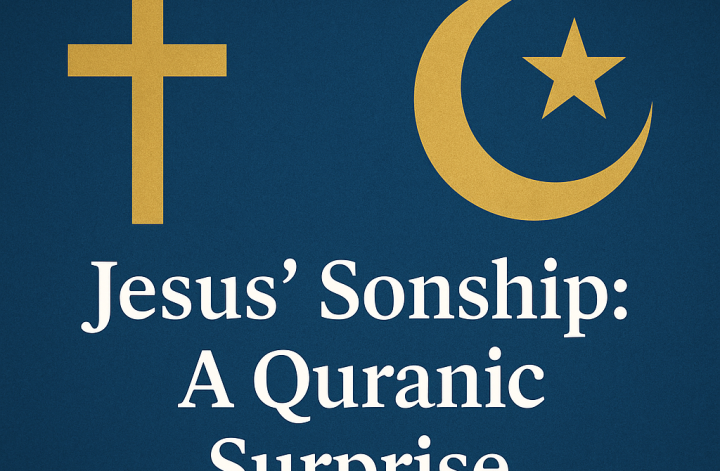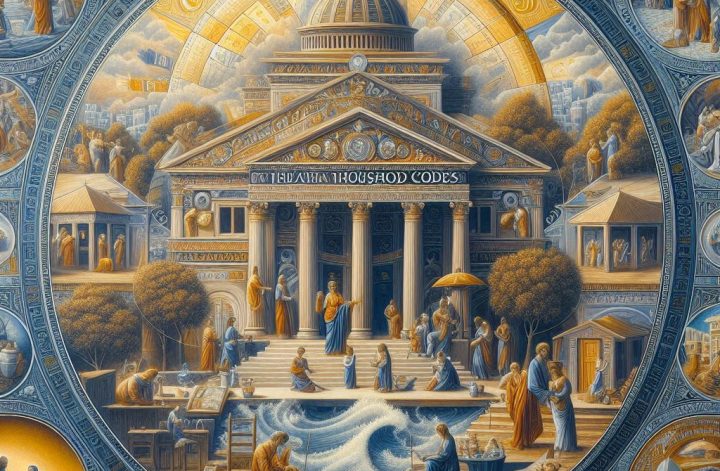In Part 1, I wrote on some general points to be aware of in reading the book of Revelation and provided an example from the book’s first Chapter. I want to say a few things about Chapters 2 and 3, which contain the seven letters addressed to the seven churches in Asia Minor in the first century. Let’s briefly say something about how John structures the book around the theme of judgment. 1 Peter 4:17 expresses an idea about judgment beginning with God’s household, the church. John takes the idea very seriously in the way Revelation is structured. Chapters 2 and 3 focus on “judgment” or warning/encouragement of the churches, while the rest of the book is about judgments/warnings of the world.
Perhaps the most interesting question in these chapters is the identity of the seven angels of the churches in today’s western Turkey. The literature has two interpretations: the angels are either humans or divine beings. The text identifies each of these beings as an “angelos,” meaning “messenger.” In the Bible, this term can refer to both humans and divine beings.
Human Messengers?
This may be the commoner way to read the text. This reading sees each angel as the leader of the seven local churches. That is, John addresses these leaders in letters likely to be read to the congregation. The strength of this approach lies in being a more natural reading, but it has its natural difficulties:
1. It’s probably anachronistic to suppose that each of the seven local churches had one leader (like we do today) in the first century. The model of the Jerusalem church was such that there was a plurality of leaders in the church (Acts 15, Galatians 2:9). If these Asia Minor churches also had a plurality of leaders, the human messenger interpretation would not work well.
2. This interpretation suggests that Jesus specially cares somewhat more about the leaders of a church than the rest of the members. Revelation 1:20 explains the vision thus:
“As for the mystery of the seven stars that you saw in my right hand, and the seven golden lampstands, the seven stars are the angels of the seven churches, and the seven lampstands are the seven churches.”
Whereas Jesus walks among the churches (which this interpretation would read as church members minus the pastor), he holds the pastors in his right hand. It’s strange, to say the least, that the leaders of the churches are not properly part of the churches they lead.
3. The contents of each letter read like they are addressed to a suffering/threatened congregation. Hence, Jesus tells the Smyrna church, for instance, that the devil is about to throw “some of you” into prison (2:10). He also says this to the Pergamum church, “I know where you dwell, where Satan’s throne is. Yet you hold fast my name, and you did not deny my faith even in the days of Antipas my faithful witness, who was killed among you, where Satan dwells.” (2:13). Considering that the congregations as a whole suffered the threats and actual acts of violence, it does not make much sense, as spelled out above, that the church leaders are isolated (and protected?) in Jesus’s right hand.
Divine Messengers?
Another way to read the text is to take the angels as divine beings. John uses “angel” (or its plural form) 67 times in Revelation. All occasions non-controversially refer to divine beings except the 7 instances of chapters 2 and 3. This observation shifts the argument in favour of the angels being divine. If that reading is correct, it implies that each of the seven churches has an angel assigned to it. But what in the world (or heaven) would it mean to address a letter about human affairs to a divine being? Admittedly, this is not the most natural way to read the letter. However, there are good reasons to do so.
1. We have observed that taking the angels as human messengers does not produce wrinkle-free reading. Besides, as already pointed out, the other 60 times that John uses the terms, he refers to divine beings. It’s, therefore, likely that the debated seven instances also have divine referents.
2. This is a good place to remind ourselves that genre matters. Revelation is an apocalypse (indeed, “revelation” means “apocalypse”) featuring multi-headed creatures, a flying woman, and a talking statue, among other things. In other words, we should not take literalism too far in such texts as Revelation.
3. Consider the following additional points. Did John send the individual letters to respective churches, or did each church get to see the letters addressed to the other churches (much like we do today when we read all seven letters in our Bibles)? A wooden literal reading would require the former option, even though the book does not say that John despatches the letters individually. Also, such a wooden, literal reading might lead us to believe that the churches never get to see the remaining contents of Revelation (chapters 4 to 22) since these aren’t church-specific and are not included in the letters.
There’s another interesting point to note about a literalistic reading. If we suppose each church gets its own letter and does not see the letters addressed to other churches, then the promises/rewards at the end of each letter become specific to the local churches. So, the victorious Christians in Ephesus get to eat from the tree of life, those in Smyrna get to avoid the second death (lake of fire), the Pergamumians get some stored manna and white stones, Thyatiran believers get a morning star and rule over the nations, the ones in Sardis get to be clothed in white garments and their names professed by Jesus before God, the Philadelphian assembly become pillars in God’s temple with God’s name and the name of the new city written on them, and finally the Laodicean cohort get to sit with Jesus on his throne.
There are at least two problems. First, such a one-church-one-reward reading seems prohibited by the formulaic refrain attached to the announcement of each reward, “…let him hear what the Spirit says to the churches.” In other words, whatever the Spirit promises to one church, he promises to all churches. Second, extreme literalism (involving rewards specific to each local church) would suggest an unfair distribution of rewards. Some victors in the churches will rule over nations and sit on Jesus’s throne while others get white garments. If the Sardis church were like the Nigerian Celestial Church of Christ, one can readily sympathize with the victors’ disappointment – having worn white clothes all their lives. It is also worth noting here that John would later explicitly say there is no temple in the new heaven and earth (21:22), which makes one wonder what the rewards for the Philadelphians are – under a wooden, literal reading. For these reasons, it is more likely that the letters are symbolic and that John uses them in some literary way to communicate something to his book’s (first-century) recipients. What might that be?
There is a candidate argued for by the scholar Michael Heiser. Now is not the time to flesh out the view comprehensively, but the following sketch should be sufficient. As noted in Part 1, John often makes theological points through subtle moves that require a solid understanding of the Old Testament, especially books like Ezekiel and Daniel. In the Old Testament, ancient Israel were the chosen people God made into a kingdom of priests (Exodus 19:6), cut a covenant with (Exodus 6:4), and regularly met with in a temple. By the middle of the first century (likely before John wrote Revelation), all of these features – chosen people (1 Peter 2:9, 10), temple (1 Corinthians 3:16), covenant (Hebrews 8:13, 9:15), and priesthood (1 Peter 2:5, 9) – had already been applied to Jesus’s followers. The church had become a new Israel, consisting of Jews and Gentiles, with the task of revealing God to the world just as ancient Israel was tasked to do.
But there is another thing ancient Israel had: they had a dedicated angel, the archangel Michael. Daniel 12:1 describes Michael as the prince, an angelic term, in charge of Daniel’s people, Israel. In fact, Daniel 12 is one of the passages that John heavily appropriates in Revelation and following are some of the features of the passage that John uses in his writing: salvation for people whose names are found in the book (Daniel 12:1), the dead rising to everlasting life or condemnation (Daniel 12:3), the phrase “time, times, and half a time” (Daniel 12:7), and 1290 days (Daniel 12:11). Hence, it’s not altogether unlikely that John may be theologizing with the angel of Israel element of Daniel 12 morphed into the angel of each of the churches. If the old Israel had an assigned angel, it makes sense that a new Israel should do too.
If that reading is right, it would be John’s way of connecting the heavenly sons of God to the human children of God. The affairs of the Church and the task of preaching the gospel involve both kinds of God’s children. Elsewhere in Revelation, we are told about angels who self-identify as fellow servants with John and other believers (19:10, 22:9). Hebrews 1:14 also says that angels are closely tied to the Church’s ministries.
In light of all these points, I think taking the angels as divine beings (or one divine being?) makes better sense of the text.





1 Comment